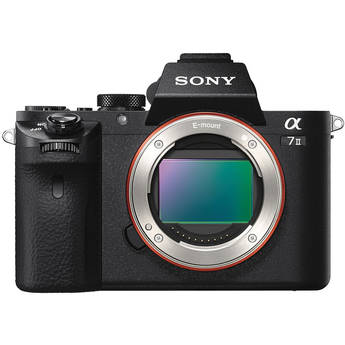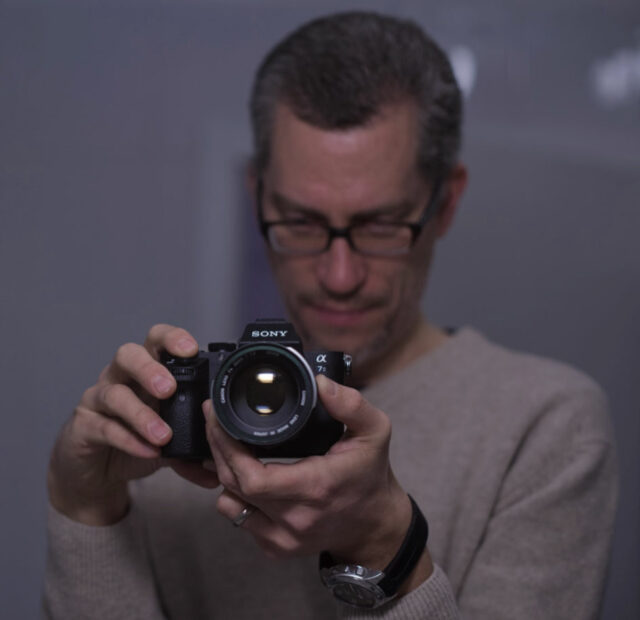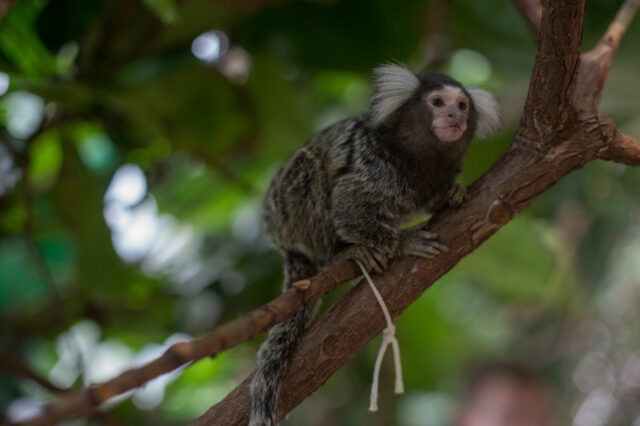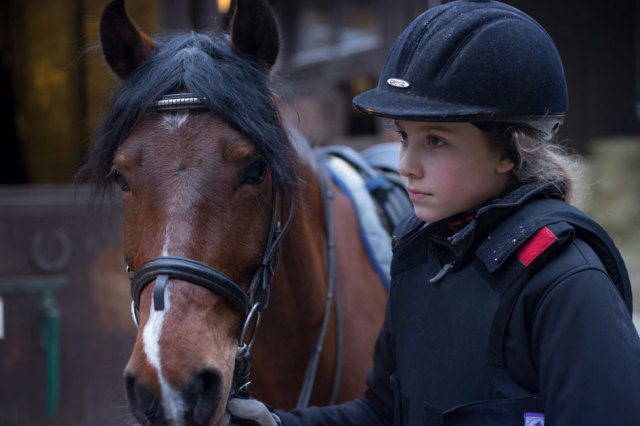Sony A7II – an enthusiast consumer perspective
Gunther Machu works for a large engineering corporation and travels the world for business. On his trips, he has started shooting video for pleasure with amazing results that have brought him a lot of fans on his Vimeo account, not only from enthusiast filmmakers but also from professionals. He always uses the smallest kit possible – the Panasonic GH2 and the Blackmagic Pocket Cinema Camera are usually his main work horses. In this guest post, he shares his experiences with the new Sony A7II, which we gave him for a spin over the weekend. (nl)
When I heard from Nino Leitner from cinema5D that they had a review sample of the Sony A7II to test in their office, I got quite excited – could this be the camera I was hoping for for the last few years?
When I wanted to join the DSLR revolution about 5 years ago, I was hesitant to invest in a big and heavy camera like the Canon 5D / 7D or smaller siblings like the Canon 550D, not to mention lenses which I did not have.
I needed a small camera, a flip out screen and the ability to start with a limited amount of investment. Hence, I bought a Panasonic Lumix GH1 with kit lens in 2009 along with a 50€ Ebay Canon FD 50mm f1.4 – easy to adapt to the GH1 because the lack of a mirror allows the use of almost any lens out there by using cheap manual adapters.
The Lumix package was so small that I was able to carry it in my hand luggage allowing me to bring it along on my frequent business trips to all the remote places around the world – bingo! My motivation to travel increased significantly as I had my hobby with me!
Over the years a lot of cameras came along, but they were not for me – too big, lack of flip out screen, too expensive, etc… Nevertheless I was watching the market, as I was aware of the limited dynamic range of my Lumix cameras, also I got very interested in color grading and the AVCHD files had a very baked – in look, making it hard to get the images I wanted.
That’s why I invested in a Blackmagic Pocket Cinema Camera (BMPCC) in 2013. Wow – even smaller than the Lumix line, I was able to use all my lenses and the image is absolutely amazing (apart from occasional moire). BUT unfortunately it can hardly be used as it is – no flip out screen, mediocre on board audio. Hence, I invested in a cage, an external 7” monitor and a ZOOM H2 for the audio (via line in to the BMPCC) – a very nice package, and I will keep using it but it’s not small by all means any longer, and it stayed home on most of my recent business trips…
But what now? I just couldn’t go back to my Lumix’es, having seen the advantages of LOG encoded files and the dynamic range which comes along with it. Also, the smaller sensor sizes limited the usage of the glass I had collected (be aware – this can become a passion on its own). Mostly my lovely full frame lenses like the 40 year old Canon FL 55mm f1.2 or the Canon FD’s like the 50mm f1.4, the 28mm f2.8, or my >30 years old Vivitar Series 1 zoom 35mm – 85mm f2.8.
Well, then the Sony A7 mirrorless fullframe cameras came along – wow, mirrorless meant that I would be able to use all my old fullframe glass, not cropping in any longer! They also had all the nice little things I started to like with the BMPCC, like Zebra’s for exposure, and focus peaking. And suddenly, with the Sony A7s also LOG encoded, high bitrate XAVC S files were implemented. Also, the flip out screen was back – all in a small package!
I was about to buy the Sony A7s when I read a rumor that Sony was working on a 5 axis sensor – shift image stabilization for the A7 line. I decided to wait, and all of a sudden the Sony A7II was announced – would this be my camera, giving me image stabilization on all my old fullframe lenses?
A dream to come true.
And here we are – I have a Sony A7II in my hands for a quick test over the weekend!
Little Monkey at the “Haus des Meeres” in Vienna shot with the Canon FL 55mm f1.2 at f=2 on the A7 II
My Sony A7II findings
Many others have already written about the tech – specs, also the ergonomics and shortcomings of the image video – wise for pro – usage. As an enthusiastic consumer I was still asking myself if it would tick my boxes for my personal needs, far from any professional perspective.
- I know others have mentioned it, but I have to mention it again: the placement of the movie record button is a joke. You can skip the first and last second of your recording as you shake the cam heavily trying to find it with your – thumb, or index finger? I have no clue how this should work. 5 axis stabilization does not help here ;-)
- Yeah, all my old glass is now stabilized – you can enter the focal length of your manual glass, finally giving me a fantastic full frame look! Very nice, and it works surprisingly well, quite usable actually – see my little test video below. It still shows some microjitter here and there – quite strangely the 28mm showed more microjitter than a 55mm lens. Hope this will be improved on a potential future Sony A7sII
- Even for a non – professional like me, the image quality is a bit disappointing in movie mode. It is OK for occasional clips here and there, but not for more serious work. Aliasing and moire is there, and in general the image is quite soft. Only with shallow depth of view these issues on the A7II can be hidden.
- SLOG 2 (picture profile 7) is very nice, captures a big dynamic range, it grades very well and quite surprisingly I did not encounter any banding (as heavier grades in 8 bit frequently exhibit) – that’s maybe due to the noise dithering. The minimum ISO is 1600 for SLOG2, hence heavy ND filtration is needed if you want to shoot wide open in sunlight. Something I am quite used to from my BMPCC (base ISO 800) with the Metabones Speedbooster (boosting the image by 1 2/3 additional stops, resulting in a “base” ISO of approx. 2600). Unfortunately the shadows of the A7II are very noisy at that ISO, almost unusable. See the images below:
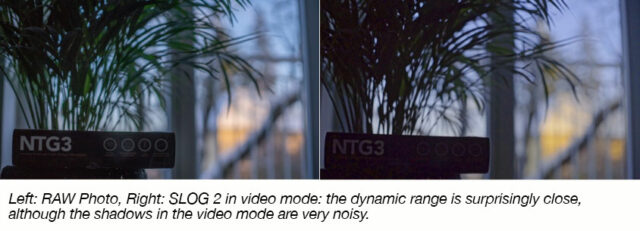
- Shooting SLOG 2 means that the image you see on the (otherwise very good) monitor is very flat, and unfortunately the focus peaking does not work well in that mode (it does however work well with the other picture profiles) – sometimes not showing any peaking information in low contrast situations – it means you would have to use an external monitor again to get the focus right L. On the BMPCC for instance it works very well, even when the crappy on board monitor is used. Sony, please improve that, Blackmagic shows how good it can be!
- On board audio is pretty good, with nice audio meters on the screen
- The photo quality of the 24MP full frame sensor is lovely, in combination with (now stabilized) old glass and a very good focus peaking (yes, if you do not shoot SLOG2 = PP7) a super nice combination. The latest update of Adobe Lightroom (5.7.1 from mid December) now supports the Sony A7II RAW files.
Shooting photos with old manual glass works fantastic – Canon FD 50mm f1.4, 1600 ISO
Summary
Hence, to summarize, the Sony A7II is an amazing camera. It ticks almost all my boxes – except for the image quality of the video mode. And this one remains my number one priority, even for my non professional background – I do not care at all for 4K, but I do care for a nice FullHD image. This means I will happily continue to shoot with my BMPCC until potentially a camera like the Sony A7s with sensor shift image stabilization will arrive in the near (or distant?) future – even 10bit encoded SLOG2 maybe to improve noise grain in the shadows?
Video
I shot a little test video, making use of the image stabilization for the worst case scenario: trying to nail my 6 months old puppy dog when she was plowing through the snow – she would not hold still for a second, hence handheld is the only option. See yourself below, I was quite impressed how good stabilization worked! Without it most shots would be crap! You can even fake “slider” shots in handheld mode, although sometimes still microjitter is there. It was all shot on two lenses, a Canon FD 28mm f2.8 and a Canon FL 55mm f1.2, mostly around f=4.0
Graded in DaVinci Resolve, using a three layer node grade, roundtripping with Adobe Premiere via XML. Node #1 is using a LUT to convert SLOG2 into Linear, node #2 is using a LUT to convert Linear to Cineon LOG, node #3 is using an Arri Alexa LUT to convert Cineon LOG into Rec 709. Sounds a bit complicated, but this way I am getting very nice skin colors while having full control over highlights and shadows.
